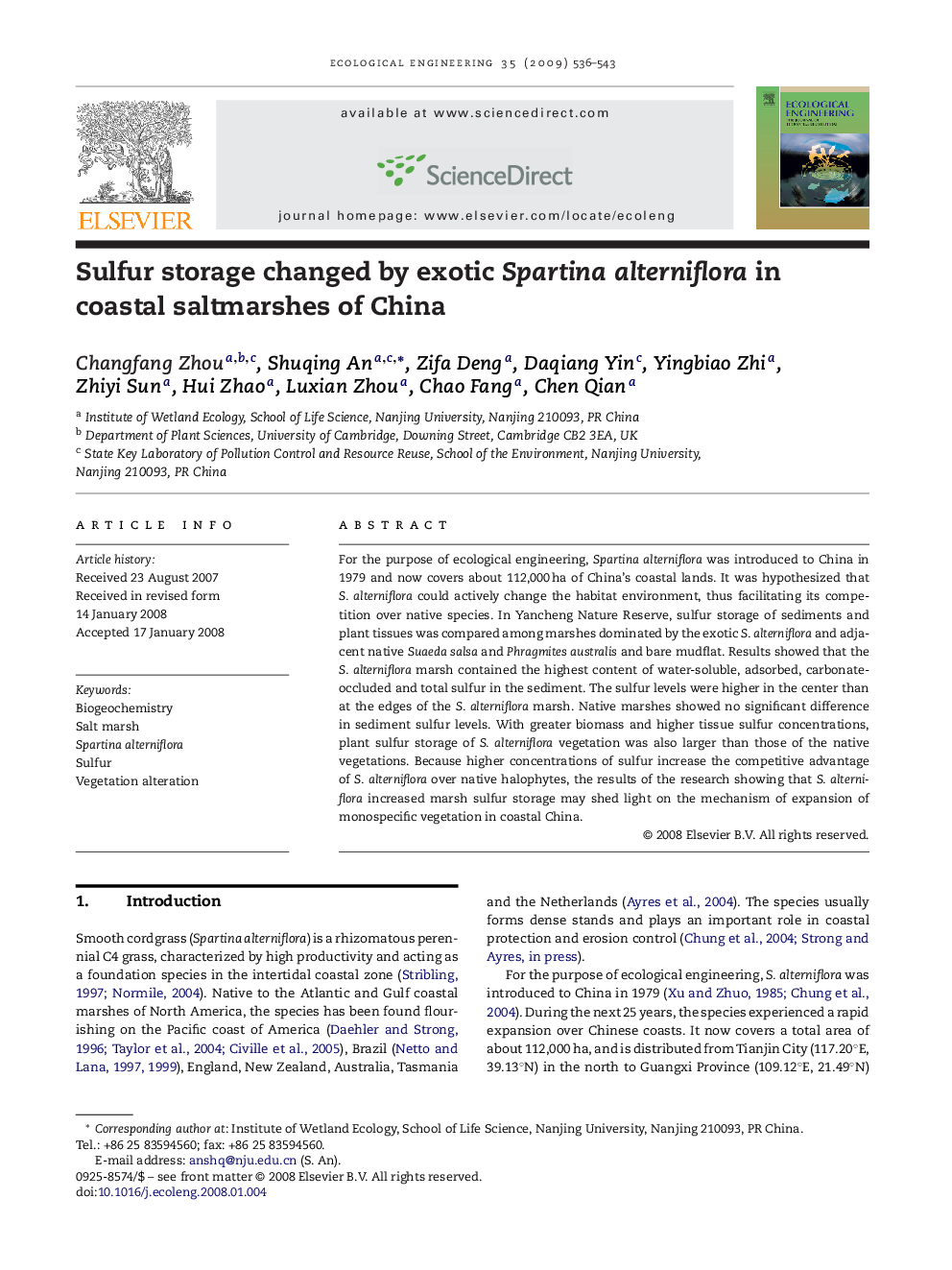| Article ID | Journal | Published Year | Pages | File Type |
|---|---|---|---|---|
| 4390985 | Ecological Engineering | 2009 | 8 Pages |
Abstract
For the purpose of ecological engineering, Spartina alterniflora was introduced to China in 1979 and now covers about 112,000Â ha of China's coastal lands. It was hypothesized that S. alterniflora could actively change the habitat environment, thus facilitating its competition over native species. In Yancheng Nature Reserve, sulfur storage of sediments and plant tissues was compared among marshes dominated by the exotic S. alterniflora and adjacent native Suaeda salsa and Phragmites australis and bare mudflat. Results showed that the S. alterniflora marsh contained the highest content of water-soluble, adsorbed, carbonate-occluded and total sulfur in the sediment. The sulfur levels were higher in the center than at the edges of the S. alterniflora marsh. Native marshes showed no significant difference in sediment sulfur levels. With greater biomass and higher tissue sulfur concentrations, plant sulfur storage of S. alterniflora vegetation was also larger than those of the native vegetations. Because higher concentrations of sulfur increase the competitive advantage of S. alterniflora over native halophytes, the results of the research showing that S. alterniflora increased marsh sulfur storage may shed light on the mechanism of expansion of monospecific vegetation in coastal China.
Related Topics
Life Sciences
Agricultural and Biological Sciences
Ecology, Evolution, Behavior and Systematics
Authors
Changfang Zhou, Shuqing An, Zifa Deng, Daqiang Yin, Yingbiao Zhi, Zhiyi Sun, Hui Zhao, Luxian Zhou, Chao Fang, Chen Qian,
